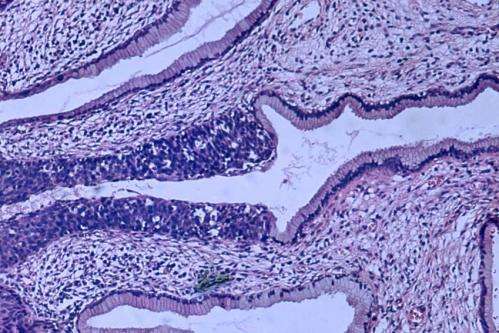
An updated cervical cancer screening guideline from the American Cancer Society reflects the rapidly changing landscape of cervical cancer prevention in the United States, calling for less and more simplified screening. The guideline appears in the ACS’s flagship journal, CA: A Cancer Journal for Clinicians.
The updated guideline recommends that individuals with a cervix initiate cervical cancer screening at age 25, continuing through age 65, and that primary human papillomavirus (HPV) testing (HPV testing without the Pap test) every 5 years be the preferred method of testing.
The guideline says using HPV testing in combination with a Pap test (called cotesting) every 5 years or Pap tests alone every 3 years are acceptable options for now, as not all labs have transitioned to primary HPV testing.
“These streamlined recommendations can improve compliance and reduce potential harms,” said Debbie Saslow Ph.D., managing director, HPV & GYN Cancers for the American Cancer Society. “They are made possible by some important developments that have allowed us to transform our approach to cervical cancer screening, primarily a deeper understanding of the role of HPV and the development of tools to address it.”
Virtually all cases of cervical cancer are caused by infection with high-risk strains of HPV. Evidence shows the HPV test is more accurate than the Pap test and can be done less often; one HPV test every five years is more effective than a Pap test every three years, and even every year as was recommended in the 1980’s and 1990’s, in reducing the risk of cervical cancer. A negative HPV test is linked to a very low cervical cancer risk. In addition, a vaccine for HPV has been in use for nearly 15 years, and more women of screening age are now vaccinated and protected from the majority of cervical cancers.
The previous ACS guideline, released in 2012, called for screening starting at age 21. Since then, HPV vaccination rates have improved in the United States. Data suggest vaccination has led to a drop in rates of precancerous cervical changes, the precursors to cancer. In addition, cervical cancer incidence is low in this age group. Cancer registry data from 2011 to 2015 indicates an estimated 108 cases of invasive cervical cancer in women 20 to 24 years in the U.S. each year, a number that is expected to continue to fall as vaccine use increases. There are also potential harms related to the treatment of precancerous cells identified by screening including preterm birth, and screening has not been shown to lower the rate of cancer in women in this age group. Also, most HPV infections in women in this age group become undetectable in 1-2 years. Those factors led the ACS to move the recommended age to initiate cervical cancer screening to 25.
“We estimate that compared with the currently recommended strategy of cytology (Pap testing) alone beginning at age 21 and switching to cotesting at age 30 years, starting with primary HPV testing at age 25 will prevent 13% more cervical cancers and 7% more cervical cancer deaths,” said Dr. Saslow. “Our model showed we could do that with a 9% increase in follow-up procedures, but with 45% fewer tests required overall.”
American Cancer Society screening guidelines are created by the Guideline Development Group (GDG), 11 clinicians and population health care professionals and 1 patient advocate appointed by the ACS Board of Directors to create all of its cancer screening guidelines. To avoid professional conflicts of interest, the GDG considers content specific input and the opinions of expert clinical specialists but is responsible for supervising the review of the evidence and transforming the evidence into writing the guidelines.
The full guideline:
The ACS recommends that individuals with a cervix initiate cervical cancer screening at age 25 and undergo primary HPV testing every 5 years through age 65 (preferred). If primary HPV testing is not available, individuals aged 25-65 years should be screened with cotesting (HPV testing in combination with cytology) every 5 years or cytology alone every 3 years (acceptable). (Strong recommendation)
Cotesting or cytology testing alone are included as acceptable options for cervical cancer screening because access to an HPV test that has been approved by the FDA for primary screening may be limited in some settings. As the US makes the transition to primary HPV testing, the use of cotesting or cytology alone for cervical cancer screening will not be included in future guidelines.
The ACS recommends that individuals with a cervix who are older than age 65 years, who have no history of CIN2+ within the past 25 years, and who have documented adequate negative prior screening in the 10-year period prior to age 65, discontinue cervical cancer screening with any modality. (Qualified recommendation)
Adequate negative prior screening is currently defined as 2 consecutive, negative primary HPV tests or 2 negative cotests or 3 negative cytology tests within the past 10 years, with the most recent test occurring within the past 5 years. These criteria do not apply to persons who are currently under surveillance for abnormal screening results.
If sufficient documentation of prior screening meeting criteria for screening cessation is not available, individuals with a cervix who are older than age 65 years, without conditions limiting life expectancy, should be screened until criteria are met.
Source: Read Full Article
